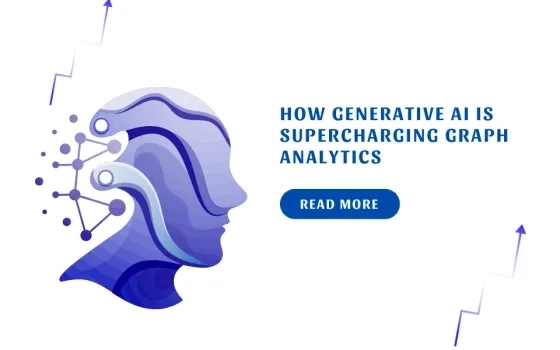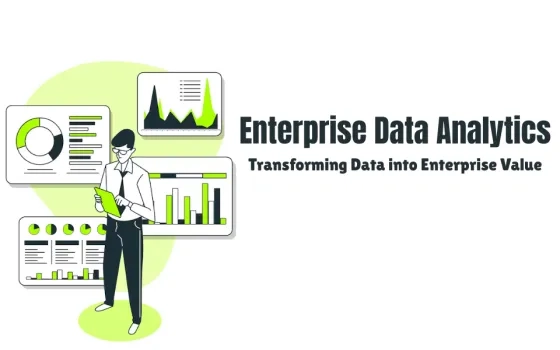From the apps we use to the businesses we interact with, data plays a pivotal role in shaping our experiences. Managing this vast amount of information effectively is crucial. It paves the way to smooth operations and helps in gaining insights and making informed decisions. Enter the concept of a data lakehouse. Think of it as a bridge between vast reservoirs of raw data and the structured repositories we use for specific analyses. A data lakehouse brings together the best of both worlds, offering a solution that's both flexible and powerful. As we delve deeper into the topic, you'll see why it's becoming a game-changer in the world of data management.
Understanding The Concept of a Data Lakehouse
A data lakehouse is a modern data architecture that seamlessly merges the strengths of two well-known data storage paradigms: data lakes and data warehouses. At its core, a data lakehouse is designed to store vast amounts of data, be it structured, semi-structured, or unstructured, much like a data lake. However, it doesn't stop there. It also incorporates the performance, reliability, and structured querying capabilities typical of data warehouses. This hybrid nature ensures that users can harness the flexibility of data lakes while benefiting from the structured analysis offered by data warehouses.
The Evolution of Data Storage
In the initial days of computing, traditional databases emerged as the foundation for data storage and management. These often-relational systems were structured meticulously, ensuring data integrity and consistency. Serving as primary repositories for businesses, they managed everything from transaction records to customer details.
The Rise of Data Warehouses
As businesses expanded and data volumes surged, the constraints of traditional databases became clear. This realization led to the rise of data warehouses—specialized systems designed for vast structured data, optimized for intricate queries and reporting. They revolutionized how organizations approached analytics, enabling deeper insights and strategic decision-making.
Data Lakes: Addressing the Data Deluge
With the digital boom and the proliferation of the internet, there was an influx of unstructured and semi-structured data. Data lakes emerged as vast storage solutions, holding this diverse data in its raw form. They offered the flexibility to store any data and decide its utility later, making them pivotal for big data and real-time analytics.
The Birth of the Data Lakehouse
Both data lakes and data warehouses had their merits, but they also came with challenges. Data lakes often turned into "data swamps" due to a lack of structure, while data warehouses lacked the versatility for modern data types. Recognizing this gap, the data lakehouse concept was introduced. It aimed to merge the best of both worlds, providing a unified architecture that combined the flexibility of data lakes with the structured performance of data warehouses.
Data Lake vs Data Warehouse vs Data Lakehouse
When it comes to data management, three architectures stand out: Data Lakes, Data Warehouses, and Data Lakehouses. Each offers unique features and benefits that cater to specific needs. Let's delve into a side-by-side comparison to understand their distinct characteristics.
|
Feature/Aspect
|
Data Lake
|
Data Warehouse
|
Data Lakehouse
|
|
Data Type
|
Unstructured & Semi-structured
|
Structured
|
All types
|
|
Cost
|
Low-cost storage
|
Higher cost, optimized for query performance
|
Cost-effective with performance optimization
|
|
Data Governance
|
Limited
|
Robust
|
Enhanced
|
|
Use Case
|
Data Science, Big Data Analytics
|
Business Intelligence, Reporting
|
Unified Analytics & BI
|
|
Scalability
|
Highly scalable
|
Scalable with cost implications
|
Combines flexibility and performance
|
Technical Deep Dive into Data Lakehouses
At the heart of data lakehouses lies a set of foundational technologies that ensure their efficiency and versatility. These technologies are designed to handle vast amounts of diverse data, ensuring performance, reliability, and scalability. A cornerstone among these foundational technologies is Delta Lake, an open-source storage layer that brings robust transactional capabilities to data lakes.
Delta Lake and Its Role in ACID Transactions
Delta Lake plays a central role in enhancing traditional data lakes by introducing support for ACID (Atomicity, Consistency, Isolation, Durability) transactions. Traditional data lakes often lack this transactional consistency. With the integration of Delta Lake, data lakehouses can guarantee data consistency across all operations, ensuring that the integrity of the data remains uncompromised even in the face of failures or errors. The ACID compliance brought by Delta Lake facilitates smoother data integration processes, enhances collaboration among teams, and provides a solid foundation. This assurance allows businesses to confidently build and deploy critical applications, knowing their data is accurate and dependable.
Metadata Management and Real-time Processing
Metadata management is crucial within data lakehouses. It aids in organizing, categorizing, and, most importantly, in data discovery and governance. In tandem with this, data lakehouses offer real-time data processing capabilities, equipped to handle streaming data and enabling businesses to extract insights instantly. This dynamic synergy ensures data isn't merely stored but is actionable, empowering businesses to swiftly adapt to ever-changing scenarios. Moreover, with enriched metadata, users gain the ability to trace data lineage, thereby ensuring transparency and trust in the origins and transformations of their data.
Open-Source: Shaping the Future of Data Lakehouses
Open-source frameworks and tools, like Apache Spark and Delta Lake, have been game-changers in the evolution of data lakehouses. They've laid the groundwork, introducing scalable processing and efficient storage mechanisms. Contributions from the open-source community have continually propelled innovation, ensuring data lakehouses remain cutting-edge in the realm of data management. The spirit of collaboration inherent in open-source projects fosters a rich exchange of ideas and best practices. This shared knowledge not only amplifies current functionalities but also anticipates and prepares for future challenges, positioning data lakehouses at the forefront of forward-thinking data management solutions.
Challenges and Solutions
Open-source frameworks and tools, like Apache Spark and Delta Lake, have been game-changers in the evolution of data lakehouses. They've laid the groundwork, introducing scalable processing and efficient storage mechanisms. Contributions from the open-source community have continually propelled innovation, ensuring data lakehouses remain cutting-edge in the realm of data management. The spirit of collaboration inherent in open-source projects fosters a rich exchange of ideas and best practices. This shared knowledge not only amplifies current functionalities but also anticipates and prepares for future challenges, positioning data lakehouses at the forefront of forward-thinking data management solutions.
Benefits of Using a Data Lakehouse
In the complex world of data management, data lakehouses have emerged as a powerful solution, offering a range of advantages tailored to contemporary business requirements. Let's delve into some of these key benefits:
-
Cost-Efficiency and Scalability
: Data lakehouses strike a balance between affordability and performance. They offer cost-effective storage solutions, akin to data lakes, while ensuring the high-speed query performance of data warehouses. This dual advantage means businesses can store vast amounts of data without breaking the bank and scale their operations seamlessly, adapting to both small and large data workloads with ease.
-
Enhanced Data Governance, Quality, and Security
: The architecture of data lakehouses places a strong emphasis on data governance. They ensure that data is not only stored but also cataloged, tracked, and maintained with high standards of quality. This meticulous management translates to enhanced security, with robust protocols in place to protect sensitive information. Users can trust the data's integrity, knowing that it's both accurate and safeguarded.
-
Unified Platform for Diverse Data Operations
: One of the standout features of data lakehouses is their ability to serve as a unified platform for a myriad of data operations. Whether it's in-depth analytics, machine learning models, or simple data exploration, lakehouses are equipped to handle it all. This consolidation eliminates the need for multiple systems, streamlining processes and fostering collaboration among data teams.
-
Real-Time Processing and Decision-Making
: In a world where timely decisions can make or break success, the ability to process data in real-time becomes crucial. Data lakehouses rise to this challenge, providing tools to manage streaming data and generate immediate insights. With this capability, businesses can swiftly adapt to shifts in the market, evolving customer needs, or any operational hurdles, ensuring they stay ahead of the curve.
The Future of Data Lakehouses
As we gaze into the future of data management, data lakehouses appear poised to play a central role, influenced by several technological advancements and trends. Their adaptability and comprehensive nature position them as the go-to solution for diverse data needs. As businesses increasingly value integrated data solutions, data lakehouses are poised for continued growth.
Technological Advancements and Their Impact
Emerging technologies are continually reshaping the data landscape. Quantum computing, for instance, might revolutionize data processing speeds, making data lakehouses even more efficient. Additionally, advancements in storage technologies could further optimize the way data lakehouses handle vast datasets.
AI and Machine Learning: Catalysts for Evolution
Data lakehouses are expected to integrate more deeply with AI and machine learning algorithms, automating data governance, enhancing analytics, and even predicting data trends. This symbiotic relationship will drive more intelligent and automated data management processes.
Challenges on the Horizon
While the future looks promising, challenges are inevitable. Data privacy concerns, especially with global regulations like GDPR, will require data lakehouses to adopt stricter governance models. Scalability, while a strength, could also pose challenges as data volumes grow exponentially. However, with the rapid pace of innovation, solutions are likely to emerge, ensuring that data lakehouses remain resilient and adaptable.
Practical Considerations for Adopting a Data Lakehouse
Before diving into the world of data lakehouses, it's essential to evaluate where your organization stands. This involves understanding your current data infrastructure, the skills of your IT and data teams, and the specific data needs of your business. A thorough assessment will help determine if transitioning to a data lakehouse aligns with your organizational goals and if the timing is right.
Transitioning from Current Architectures
Moving to a data lakehouse isn't a mere switch but a strategic transition. Here are some steps to consider:
-
Audit Current Data
: Understand what data you have, where it resides, and its quality.
-
Choose the Right Tools
: Invest in tools that support the migration and management of data in lakehouses.
-
Training
: Ensure your team is equipped with the knowledge to manage and operate within a lakehouse environment.
-
Iterative Migration
: Instead of a massive overhaul, consider migrating in phases, ensuring each step is successful before proceeding.
Potential Pitfalls and Best Practices
While data lakehouses present a myriad of advantages, they are not without challenges. One notable concern is the risk of data swamps, where, in the absence of proper governance, data lakehouses can become cluttered and lose their organizational structure. Additionally, as data from various sources converges into the lakehouse, integration issues might arise, complicating the data management process. To circumvent these challenges, it's essential to stick to certain best practices. Conducting regular audits allows for periodic data review and cleanup, ensuring the data remains organized and relevant. Implementing robust data governance policies is paramount to maintaining structure and security. Furthermore, fostering a collaborative environment among IT professionals, data teams, and business units ensures alignment in objectives and smooth data operations.
Conclusion
While dealing with the complexities of data management, the value of a streamlined solution like a data lakehouse becomes clear. As data continues to grow in both volume and diversity, businesses seek a one-stop-shop that's both adaptable and efficient. Dview sets itself apart in this field with its forward-thinking approach to data integration. Our data lakehouse solution, grounded in modern technology and industry best practices, goes beyond mere storage, turning data into actionable insights. For businesses aiming to harness the full potential of their data, Dview offers a compelling advantage, ensuring smooth data operations and strategic decision-making.





























